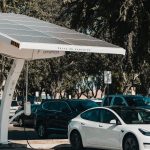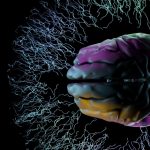Tesla’s latest software update, 2025.32.3, introduces notification messages that prompt drivers to engage Full Self-Driving (FSD) features upon detecting drowsiness or lane drift. As distracted and tired driving continue to be significant causes of road accidents, this initiative is drawing interest from both the automotive community and regulators. While some drivers remain cautious, many are closely watching how these prompts will influence real-world behavior and safety.
Recent reporting and previous releases from Tesla have focused predominantly on advancing FSD’s technical abilities, emphasizing beta testing and iterative improvements to autonomous vehicle capabilities. Last year, the discussion largely revolved around legal challenges, regulatory delays, and driver responsibility in using assisted-driving features, with limited mention of software actively recommending FSD engagement based on driver condition. The integration of alerts specifically suggesting FSD for driver attention issues marks a notable shift in strategy, highlighting Tesla’s emphasis on real-time safety interventions.
What Do Tesla’s New Alerts Say About Driver Assistance?
The software update was brought to light by well-known Tesla hacker @greentheonly, who shared that the new messages include direct recommendations for using FSD when signs of fatigue or lane drifting are identified. Examples of these alerts include:
“Lane drift detected. Let FSD assist so you can stay focused.”
and
“Drowsiness detected. Stay focused with FSD.”
These messages signal a practical application of FSD in real-time risk scenarios, encouraging drivers to utilize available safety features if their attention wanes.
How Does This Approach Fit Tesla’s FSD Supervised Policy?
Although Tesla’s FSD Supervised program mandates driver vigilance and hands-on oversight at all times, the new notifications may seem counterintuitive by urging drivers who show signs of inattention to activate FSD. However, the company maintains that such guidance is consistent with utilizing advanced driver-assistance systems to mitigate risks, while reminding drivers they remain responsible for monitoring the road. FSD, in its current form, serves as a support system rather than a replacement for human oversight.
Will FSD Unsupervised Follow These Warning Triggers?
Future expansion of these prompts could be linked to FSD Unsupervised, which awaits regulatory approval before a broader release. Tesla’s facilities in Fremont and Giga Texas are reportedly equipping vehicles with the latest FSD hardware, and pilot projects such as autonomous Robotaxi services in Austin and the Bay Area are already underway using variants of these systems. Once fully legalized, FSD Unsupervised is anticipated to integrate similar alert protocols for proactive risk reduction in fully autonomous scenarios.
Comparisons with previous news coverage reveal a pivot in communication strategy from primarily technological improvements to explicit safety-driven messaging. Tesla’s shift to in-software prompts—advising drivers who are tired or distracted to let the car handle critical decisions—reflects growing trust in FSD’s reliability. However, it also amplifies the ongoing debate over where responsibility lies when it comes to human-automation interaction on public roads.
The integration of real-time driver condition monitoring with automated system suggestions constitutes a practical effort to mitigate inattentive driving. For consumers, understanding both the potential benefits and the necessary precautions of using supervised FSD remains essential. This update underscores that, while advancements in driver-assistance technology are progressing, self-driving features still require active oversight. For users considering reliance on such alerts, ongoing regulatory developments and transparent communication from automakers like Tesla will be key factors affecting adoption and trust.










